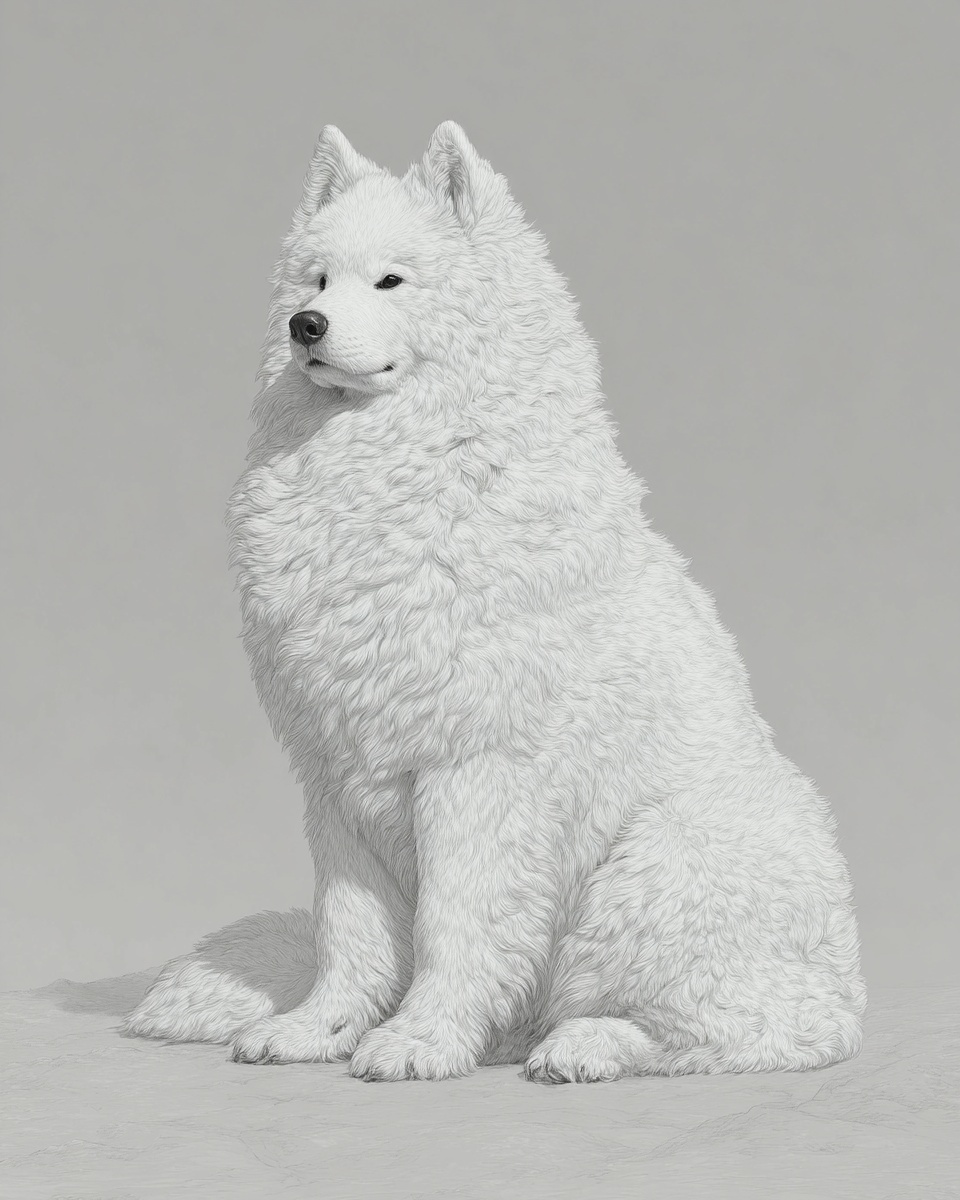Samoyed

Description
Ever wonder why Samoyeds always look like they're smiling? That iconic grin isn’t just for show—it helps keep icicles from forming on their faces in freezing Siberian weather. These dogs hail from the cold regions of Russia, where they were bred to herd reindeer, pull sleds, and provide warmth to their owners. They’re large, weighing between 35 and 65 pounds, with a thick, long double coat that’s built to handle harsh climates. Samoyeds are friendly and gentle, making them great family companions. They get along well with kids and other pets but can be quite vocal, using barks and howls to communicate. While they’re smart and can learn commands, they sometimes show a stubborn streak. Their history as hardworking sled dogs means they need plenty of activity to stay happy and healthy.
Grooming
Samoyeds have a long, dense double coat that requires regular care to stay in top shape. Daily line-brushing with a pin brush followed by a metal comb is essential to prevent mats, especially during humid weather when tangles form more easily. Bathing every 4 to 6 weeks is recommended, making sure their thick fur dries completely to avoid skin issues. Don’t forget to tidy their feet and sanitary areas between full grooms to keep them clean and comfortable. • Brush daily to the skin • Use pin brush and metal comb • Bathe every 4–6 weeks • Fully dry coat after baths • Trim feet and sanitary areas regularly Pro tip: When brushing, part the fur to reach the undercoat and remove loose hairs—this helps reduce shedding and keeps the coat fluffy. Samoyeds come in biscuit, cream, white, or white & biscuit colors, so keeping their white fur bright might require a gentle whitening shampoo occasionally.
Learn the Double routine:
→ Complete Double Grooming Guide
Walking
Samoyeds need about 100 minutes of walking daily, split into two sessions to keep them mentally and physically satisfied. They love exploring and sniffing around, so mixing in some off-leash time in a safe area can be a great way to burn off energy. Because they’re quite vocal, walks can also serve as a good outlet for their expressive nature. A typical day might look like this: a 50-minute morning walk with some light jogging or play, then a 50-minute evening stroll with time for sniffing and socializing. This routine helps prevent boredom and keeps your Samoyed happy and well-behaved. Remember, they were bred for endurance, so they enjoy longer walks rather than short bursts of activity.
Boarding
When boarding a Samoyed, a crate size of 42 to 48 inches is ideal to give them enough room to stretch and relax comfortably. These dogs enjoy active play sessions, so plan for two energetic play blocks daily combined with scent or brain games to keep their minds sharp. Staff should introduce themselves slowly and stick to a predictable routine to help reduce stress. Samoyeds thrive on interaction but can be vocal, so a calm environment with plenty of enrichment is key. Their playful nature means they get along well with other dogs, but supervision during group play is important to keep things safe. Providing cozy bedding and regular grooming during their stay will help them feel right at home.